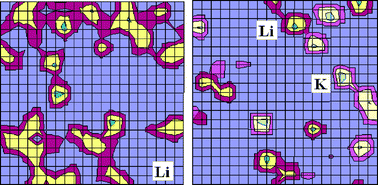When more than two kinds of mobile ions are mixed in ionic conducting glasses and crystals, there is a non-linear decrease of the transport coefficients of either type of ion. This phenomenon is known as the mixed mobile ion effect or Mixed Alkali Effect (MAE), and remains an unsolved problem. We use molecular dynamics simulation to study the complex ion dynamics in ionically conducting glasses including the MAE. In the mixed alkali lithium–potassium silicate glasses and related systems, a distinct part of the van Hove functions reveals that jumps from one kind of site to another are suppressed. Although, consensus for the existence of preferential jump paths for each kind of mobile ions seems to have been reached amongst researchers, the role of network formers and the number of unoccupied ion sites remain controversial in explaining the MAE. In principle, these factors when incorporated into a theory can generate the MAE, but in reality they are not essential for a viable explanation of the ion dynamics and the MAE. Instead, dynamical heterogeneity and “cooperativity blockage” originating from ion–ion interaction and correlation are fundamental for the observed ion dynamics and the MAE. Suppression of long range motion with increased back-correlated motions is shown to be a cause of the large decrease of the diffusivity especially in dilute foreign alkali regions. Support for our conclusion also comes from the fact that these features of ion dynamics are common to other ionic conductors, which have no glassy networks, and yet they all exhibit the MAE.

You have access to this article
 Please wait while we load your content...
Something went wrong. Try again?
Please wait while we load your content...
Something went wrong. Try again?


 Please wait while we load your content...
Please wait while we load your content...